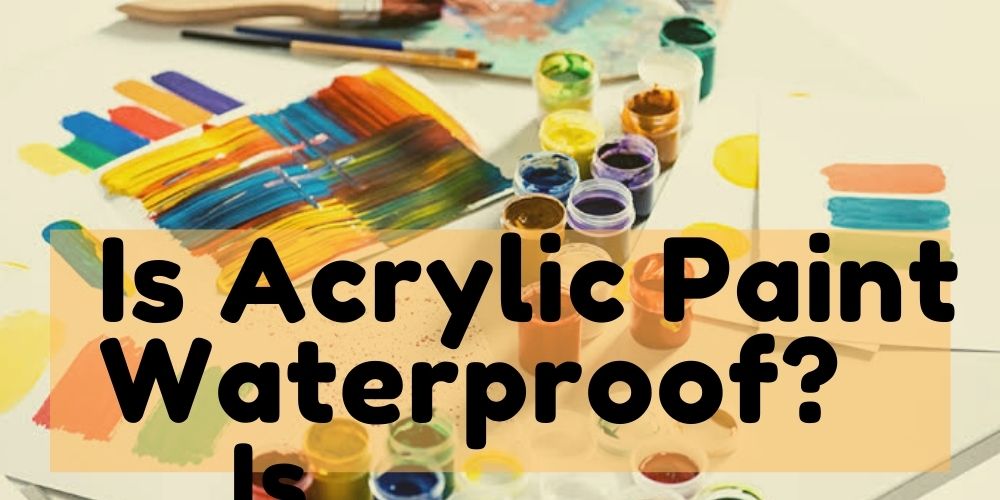Nowadays, due to trends and the demands for modern-day art, the growth of acrylic artwork is thriving. Young artists are brave enough to experiment with different shades and create their masterpieces, and I am not going to lie, it is a big hit!
But, is acrylic paint oil based?
Well, some colors are water-based (also known as latex), and some are oil-based. This determines how the paint will react on the canvas or any surface. Acrylic Paint is water based, so technically it is not oil based.
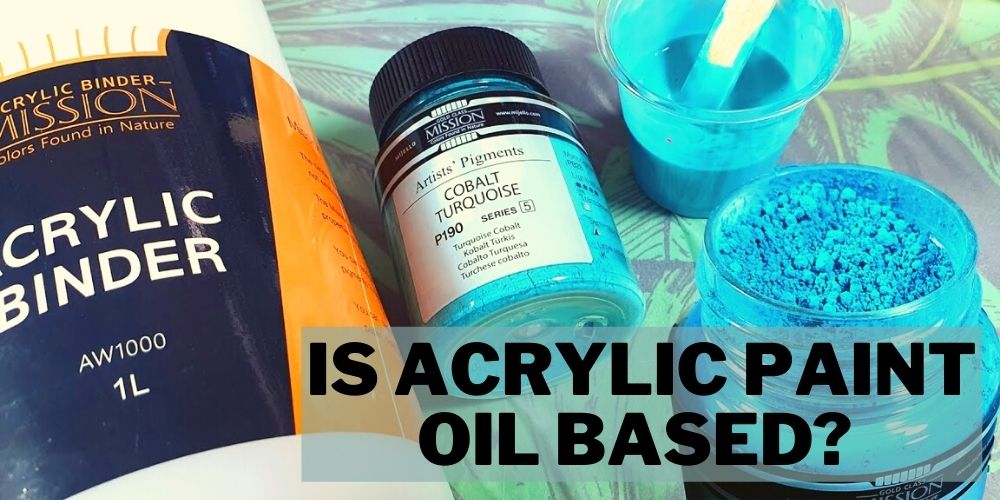
As the experimentation of different kinds of paints on canvas is increasing drastically it is really essential to know if any component of the acrylic paint is oil based or not. I will explain that in the below section.
Is Acrylic Paint Oil Based or Not?
No, acrylic paint is not oil based. It is water-based, which changes the thickness due to different pH levels and the process of evaporation of water.
Acrylic paint invention happened in the nineties whereas oil paint has an age old tradition. Oil paints generally become yellowish and darken after several years. It’s also difficult to create a layering effect on oil paints as it takes hours to dry properly.
To avoid this a water based liquid plastic paint was invented which dried within a few minutes. The paint was acrylic paint.
Acrylic paint uses water as a solvent and the pigments are suspended in an acrylic polymer emulsion. It is excellent on any surface like paper, cartilage canvas, cards wherever you want.
What is the Main Component of an Acrylic Paint?
In simple words, acrylic paints are made of certain pigments suspended in acrylic resin and polymer colloids. The exciting part is that acrylics are water bases, but when dried it does the exact opposite. It becomes water-resistant.
There are three main components in acrylic paint: pigment, vehicle, and at last binder. You have to be careful; acrylic should not be thinned with more than 23-25% water. It can change the balance of the components and thus won’t stick to the surface properly.
As mentioned before, there are three components; let us know more about them:
Pigment
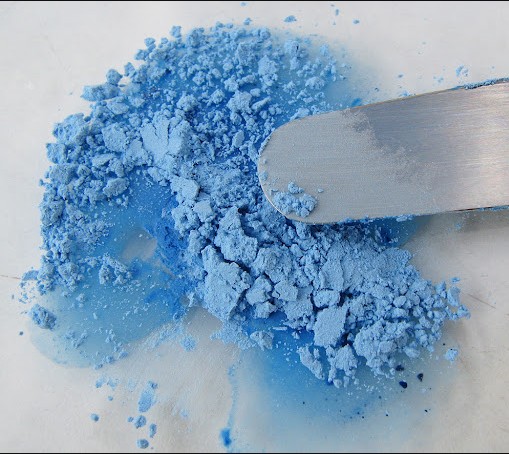
Usually, pigments are solids in a granular form which gives the mixture its color. They are pulverized into smaller particles that do not mix but remain in the paint. Pigments can be organic, inorganic, even natural, or synthetic as well.
Binder
If you don’t know what it is, a binder is a substance that binds the pigment with the mixture(paint) so that it scatters when it dries. So the binder here is the acrylic polymer which acts as a thin layer after the water present in the paint evaporates and thus protects the paint.
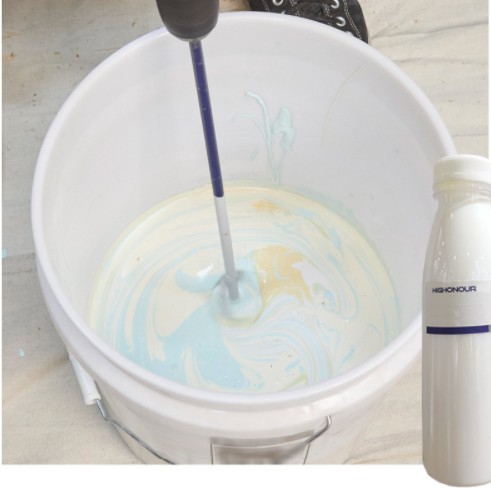
Vehicle
It is a part of the paint. As a component, its responsibility is to bear the pigment and the binder. Therefore, here water is the vehicle in this mixture of water-based acrylic paint. This element, when mixed with the other two components, created polymer colloids (emulsion).
It would be best to keep in mind that it is impossible to turn acrylic paint into oil paint. All you can do is use the acrylic by airbrushing, or you can use golden open acrylic, which generally takes longer to dry.
In which purposes Acrylic Paint Is Used?
There are several types of a surface where you can use Acrylic Paint as the base. Surfaces like canvas, wood surface, canvas including primed or unprimed, stretched or panels. If you want to create something on the wall of your personal space, then don’t worry. You can use acrylic paint as well.
In some situations, you can also use acrylic paint on a substance like ceramic or glass. Just be careful not to mix it with water while using it. The more you add water to that, the thinner the product becomes, and later it won’t stay longer.
What is an Oil-Based Paint?
Another term that is used for oil-based paints is enamel paints. It contains natural oils like linseed oils or can be made up of synthetic elements.
The process of making oil-based paints is slow compared to water-based paints. The texture is a lot sticky, thicker, and takes some time to apply on the surface as it takes a long time to dry.
You will find in some cases, the paint takes almost a day to dry, and you need to wait a day or two to reapply another coat.
They are usually used to paint heavy and rough surfaces or can be repainted by other characters. The set is well and stays for a very long time, and it gets less affected due to weather. It means you can even use it for outdoor purposes and you don’t have to worry about it.
Oil-based paints give an excellent finish to the paintings. But they do not last like water-based acrylic paints, and they have a limited variety of color shades.
In which purposes Oil Based Paint Is Used?
It is entirely normal to get confused about what type of surface they should use for oil-based paint. Even though I was one of them, now it has become much easier to understand. Generally, you can use oil-based paints on any surface.
You can use oil-based paints in painting metals like fences or other steel parts as it lasts pretty long.
If the surface is porous, you need to apply a primer. It is a good idea before painting with oil-based paints. It also helps to stick to the surface better, and it is durable as well.
Differences Between Acrylic Paint and Oil Based Paint?
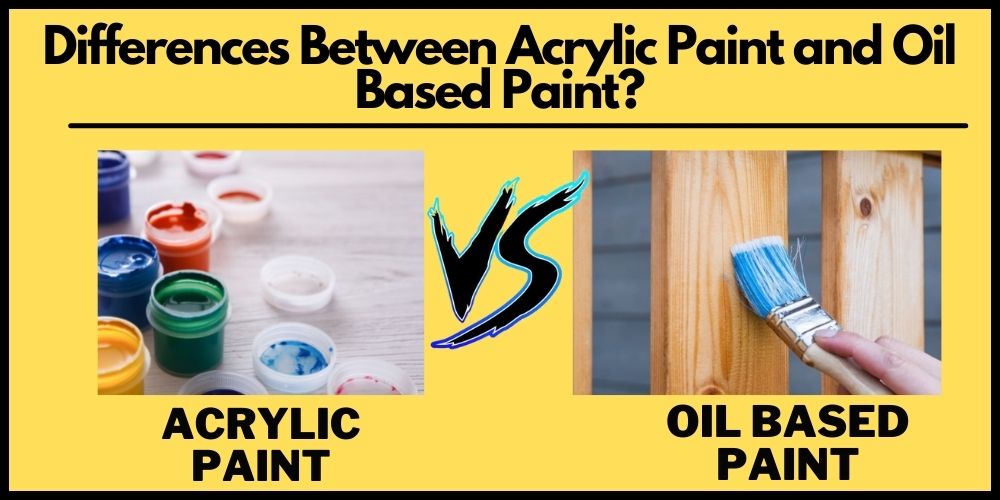
Drying time
I hate breaking to you that acrylic paint dries quickly. It makes the most vital difference between acrylic paint and oil-based paint. It generally takes a couple of hours and sometimes more than one to two hours to dry an entire painting(depending on the frame of the painting).
On the other hand, oil paint dries slowly. It takes a lot of time to set the color on the surface. Since they are so pliable, they are perfect for realistic types of painting. It is easy to blend as it takes longer to set, and therefore the strokes seem effortless.
Note: You can use acrylic retarder to slow the drying process, but be careful not to use excessive amounts. It can damage the paint and can prevent the drying process.
Preparation of Canvas/Preparation is the Key
If you take oil-based colors, you can base it up with primer. It gives a smooth surface and helps the oil paint set well, and, as a result, it gives a smooth finish. It is easy to access because it takes longer to dry. You can keep it and then apply it on the canvas or any surface. You can use gesso as a priming element so that the color stands out.
Acrylic tends to dry way faster than oil paints. Thus you need to put the color on the surface of the canvas immediately. Since its water bases and unlike oil paint, water evaporates faster, and consequently, it is pretty tricky to give realistic strokes. However, the best part, it is easy to set up for acrylic anywhere you want.
Smooth Blending Property and Longer working time
Oil-based paint has a suitable blending property as it takes a long time to set. You can merge two-color easily, one tone with another.
Contrarily, it isn’t easy to blend in acrylic paint as it dries quickly, and therefore merging two tones is quite a challenging task. Acrylic paint sets dues quickly to its fast absorption process.
Versatility
You can get a lot of options and different shades of the same color in acrylic paints. Many pigments are available to make acrylic, but the sad part is that you can apply it on a few surfaces.
But, the availability of colors in oil-based paints is minimal; therefore, only a few colors are found. You can use oil paints on various surfaces as it has a versatility trait.
Odor
Oil-based paint has little or no smell at all. The scent you get from the color is due to elements like white spirits or turpentine, which helps in the drying time and the fluidity of use.
The same goes for acrylic paint. It has less or no smell at all. If you notice a slight odor, it has expired, and you need to replace it.
Cleaning up
You can use denatured alcohol to clean the acrylic stains. You have to pour some in a cloth or cotton, hold it against the color for some time, and later rub it to remove the stain. For oil-based paint, you can use turpentine to clean the stains or the mistakes. Take a paper towel and repeat the same process as mentioned for acrylic stains.
Mold Resistance
Oil paints can likely form a layer of mold on the color. Since it contains oil as a solvent, it is the leading cause of decay. The solution to the problem is to spray a coat to protect the painting.
Color fading/ color changing when Dry
In oil painting, just after the artist finished his art, the color starts to change. You won’t notice as the change is slow, but eventually, you will find a slight change in the tone. Whereas the acrylic also changes its color, but it becomes more vivid when it dries.
Toxic solvents
Turpentine is a little toxic, and the other minerals spirits use in making oil based paints. So it becomes toxic solvents while you paint in a small space.
So it is recommended not to use it repeatedly and try to open the windows and doors. While acrylic paint does not contain toxic solvents, that is water. You can use it in a confined space without worrying about toxicity.
Layering Approach
Layering on acrylic paint is not a problem. Since it dries faster, you can easily reapply the paints, and their thick layering is ideal. But oil based colors are not suitable for layers. It consumes time to dry and if layers can become a mess.
Finishing of painting
Oil-based paints provide a realistic finish in the painting as it takes time to set on the surface. So from blending to giving a chic finish to the painting is ideal. On the other hand, acrylic paint is quite difficult to provide a finish, as it dries very quickly.
Can You Mix Oil Paint with Acrylic Paint?
To answer that question, it is not a good idea to mix oil paint with acrylic paint.
As you know, acrylic is water-based, and as the name suggests, the solvent is water. At the same time, oil-based paints are made up of a variety of oils. So, in the end, they will become a mess.
You have to keep one thing in mind. Painting one paint over another is okay. You need to paint oil paint over acrylic, not the other way round. For instance, you can primer the canvas before layering with acrylic paint. After it dries up, you can easily paint with oil paints.
Can You Use Oil Paint Over Acrylic Paint?
By now, you know that when acrylic paint dries over a canvas or any surface, it forms a layer of plastic-type substance, so you can reapply paint over it if you want to.
Many research shows that it is possible to use oil-based paint over acrylic gesso. It has no problem to create an adhering phenomenon on the canvas. You have to make sure to apply the gesso first before applying the paint, or you can find some acrylic paint that has gesso in it.
For example, if you are thinking of painting old furniture that has been painted with oil paint, then it is recommended to remove the oil layer with sandpaper first then apply the color of your choice. It can be oil-based paint or acrylic paint.
Final Thought
Now that you have all the possible details, you need to know about Acrylic paints and oil-based paints. I hope this article helps and guides you to choose the perfect color, do let us know!



